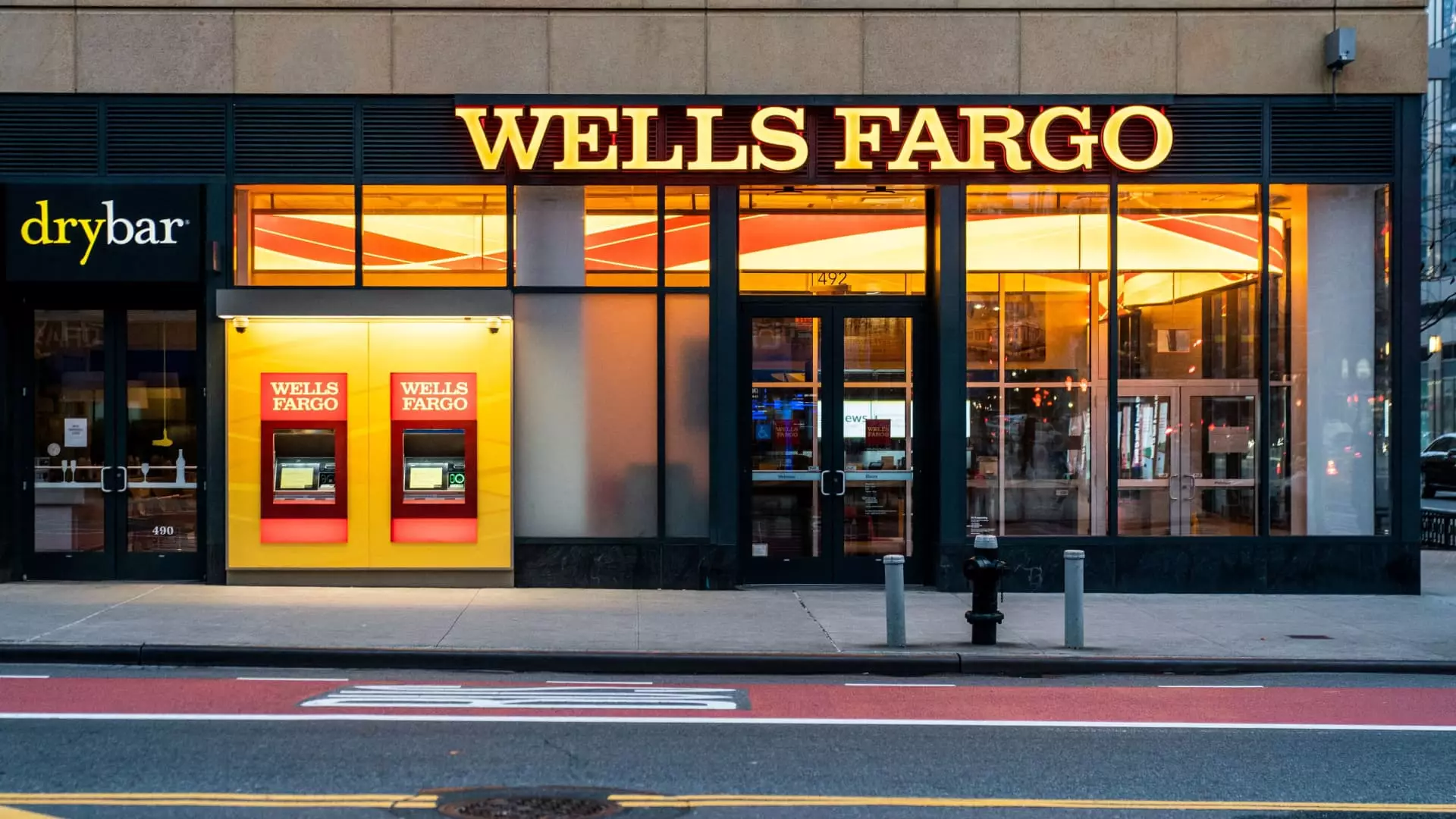Wells Fargo recently announced its quarterly earnings, surpassing analyst expectations for adjusted earnings per share, which came in at $1.39—a healthy 16% rise from the previous year. This figure, while impressive, should not blind investors to the underlying complexity indicated by a mere 2% pre-market rise in the bank’s shares. The expectation was $1.24, and while Wells Fargo performed admirably, the nuances in its financials tell a more layered story that demands scrutiny.
The reported revenue of $20.15 billion, albeit slightly below the anticipated $20.75 billion, underscores a critical point: the bank remains on somewhat shaky ground, struggling with declining net interest income, which plummeted 6% year over year to $11.50 billion. In an era of rising interest rates, such a dip raises eyebrows, and one must question if this decline foreshadows deeper troubles in the bank’s lending practices or a broader economic malaise.
Investment Banking and Wealth Management: Silver Linings
Where Wells Fargo shines, oddly, is in its non-interest income generation, showing a modest increase of 1% to $8.65 billion. This is propelled in part by profitable ventures in investment banking and wealth management. In a market often characterized by volatility, it is refreshing to observe the resilience of these sectors. However, one must ask—are these gains sustainable? The dominance of non-interest income indicates a potential over-reliance on markets and economic conditions that are notoriously unpredictable.
Moreover, in a time when traditional banking is facing increased competition from fintechs and innovative platforms, Wells Fargo’s ability to extract value from these areas is commendable and worthwhile for investors to keep close tabs on. Are they strategically positioned to innovate further, or will they lag behind more agile competitors?
Political Landscape Influences Financial Strategies
Amid fluctuating economic conditions, CEO Charlie Scharf’s comments on the Trump administration’s stance on global trade cannot be overlooked. With trade policies that often tilt the scale in unpredictable ways, the consequences for financial institutions are profound. Scharf’s acknowledgment of uncertainty serves as a reminder that political winds can dramatically affect market conditions and banking operations. While the focus on fair trade barriers is duly noted, one must consider whether Wells Fargo is equipped to navigate a socio-political landscape that can shift overnight.
His assertions of needing a “timely resolution” resonate with many investors who crave stability. However, the call for a slower economic horizon in 2025 raises questions: Is the bank bracing for impending challenges, or is it merely hedging against a possible downturn?
Share Buybacks: A Double-Edged Sword
In what could either be interpreted as a strategic move or a desperate gamble, Wells Fargo’s decision to buy back 44.5 million shares worth $3.5 billion during the quarter is worth analyzing. On one hand, buybacks signal confidence in the company’s financial health. Conversely, they can also reflect a lack of viable investment opportunities within the firm. In this climate of uncertainty, the choice to redistribute capital in this manner is intriguing—are they investing in future growth, or are they simply propping up share prices?
Furthermore, the provision of $932 million for credit losses indicates that Wells Fargo is not entirely out of the woods yet. Such reserves act as a buffer against potential defaults, yet they also highlight the cautious stance the bank is adopting amid a warming economic climate.
While Wells Fargo’s quarterly performance presents some positive indicators, the undercurrents of concern in revenues, political influence, and share buyback strategies warrant deeper consideration, especially for those looking to invest in a landscape marked by volatility and uncertainty.

